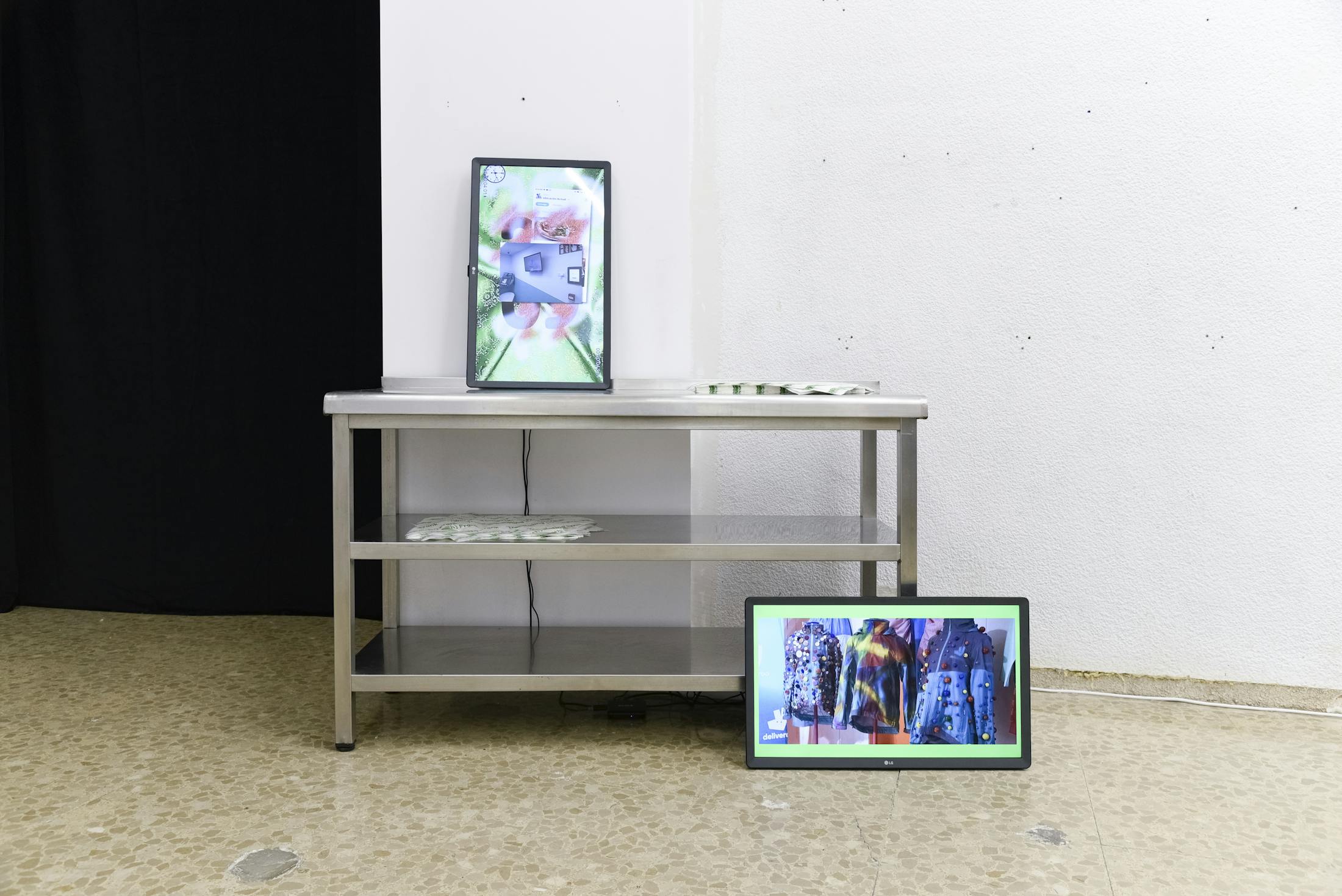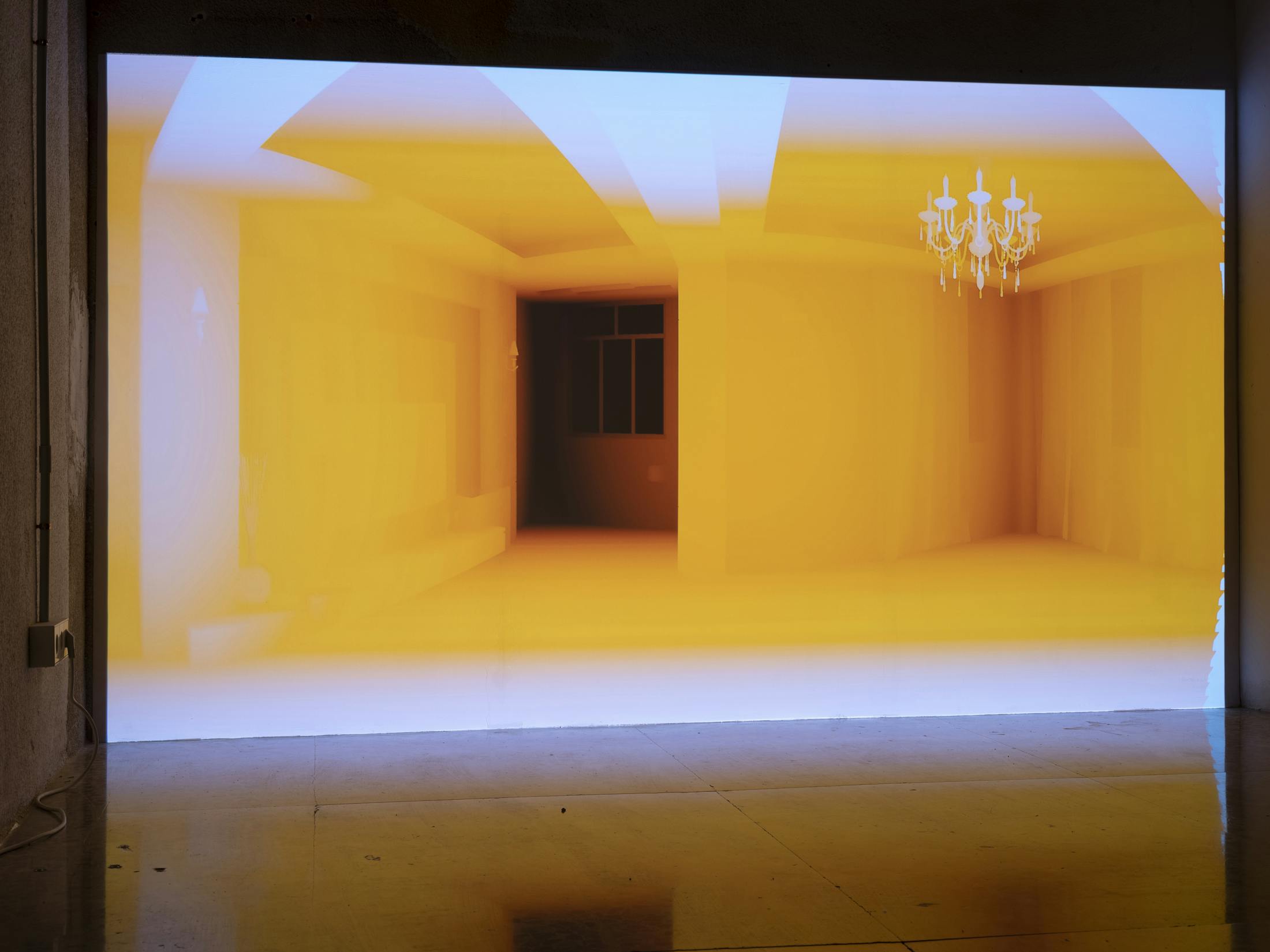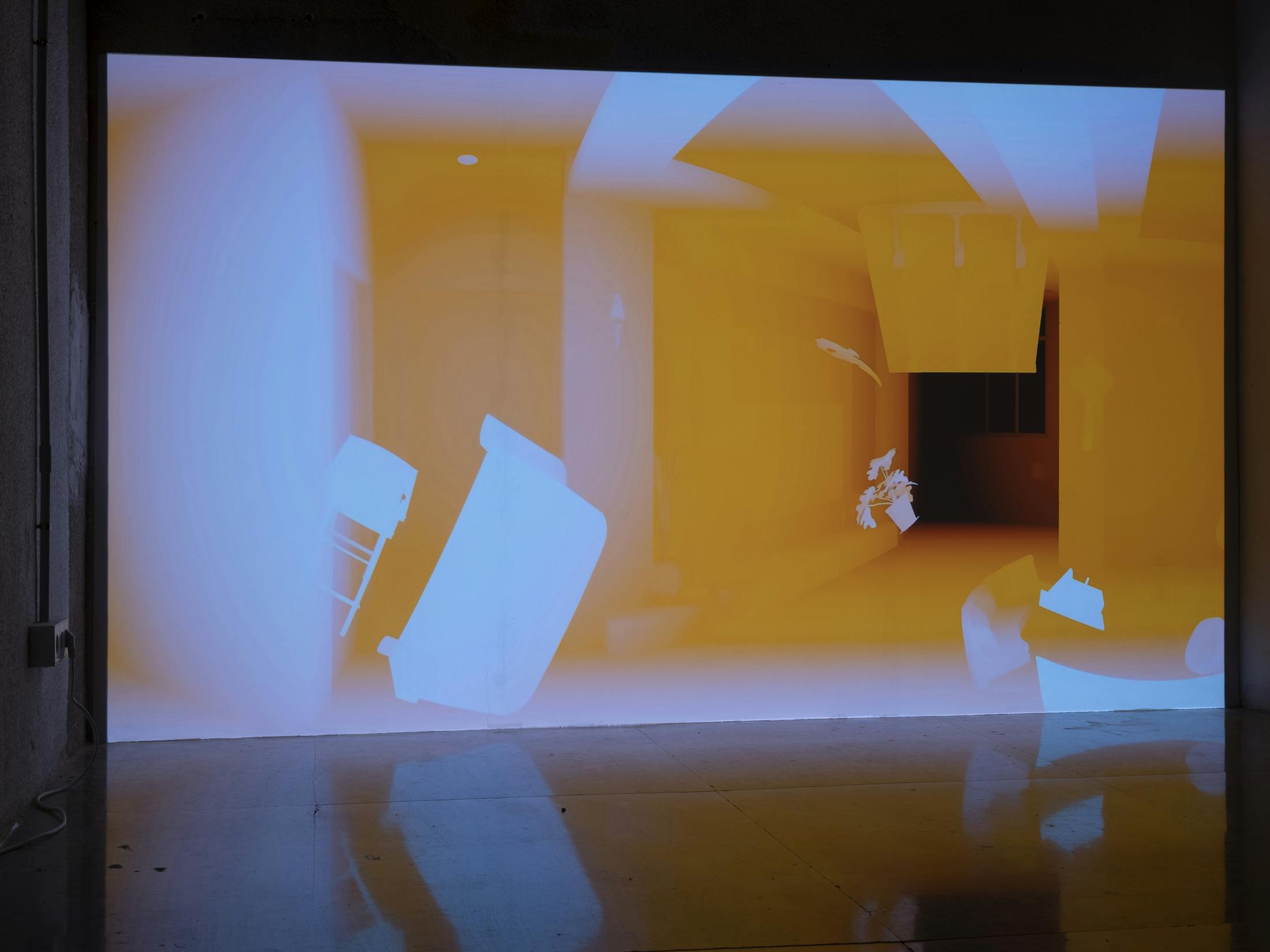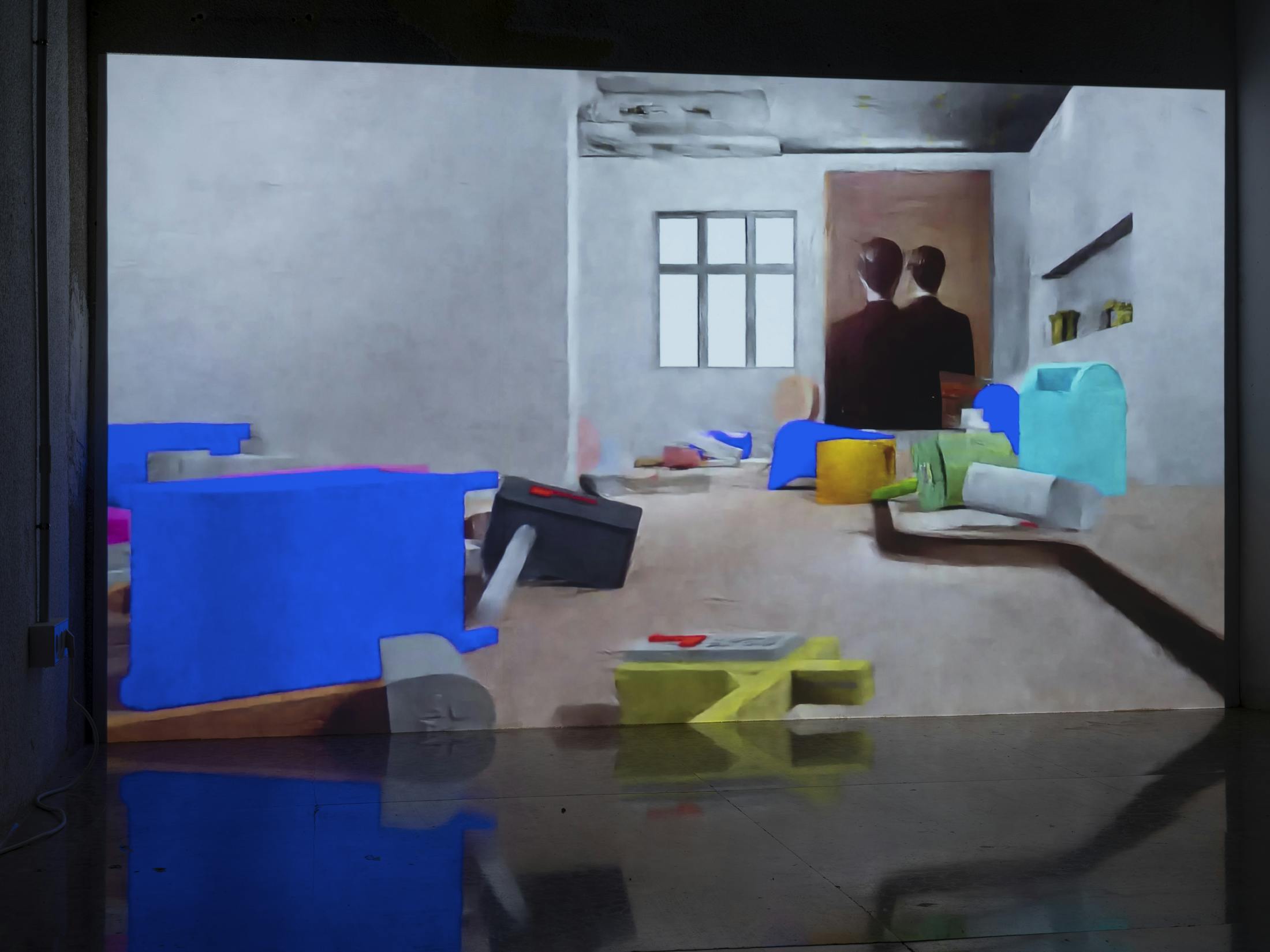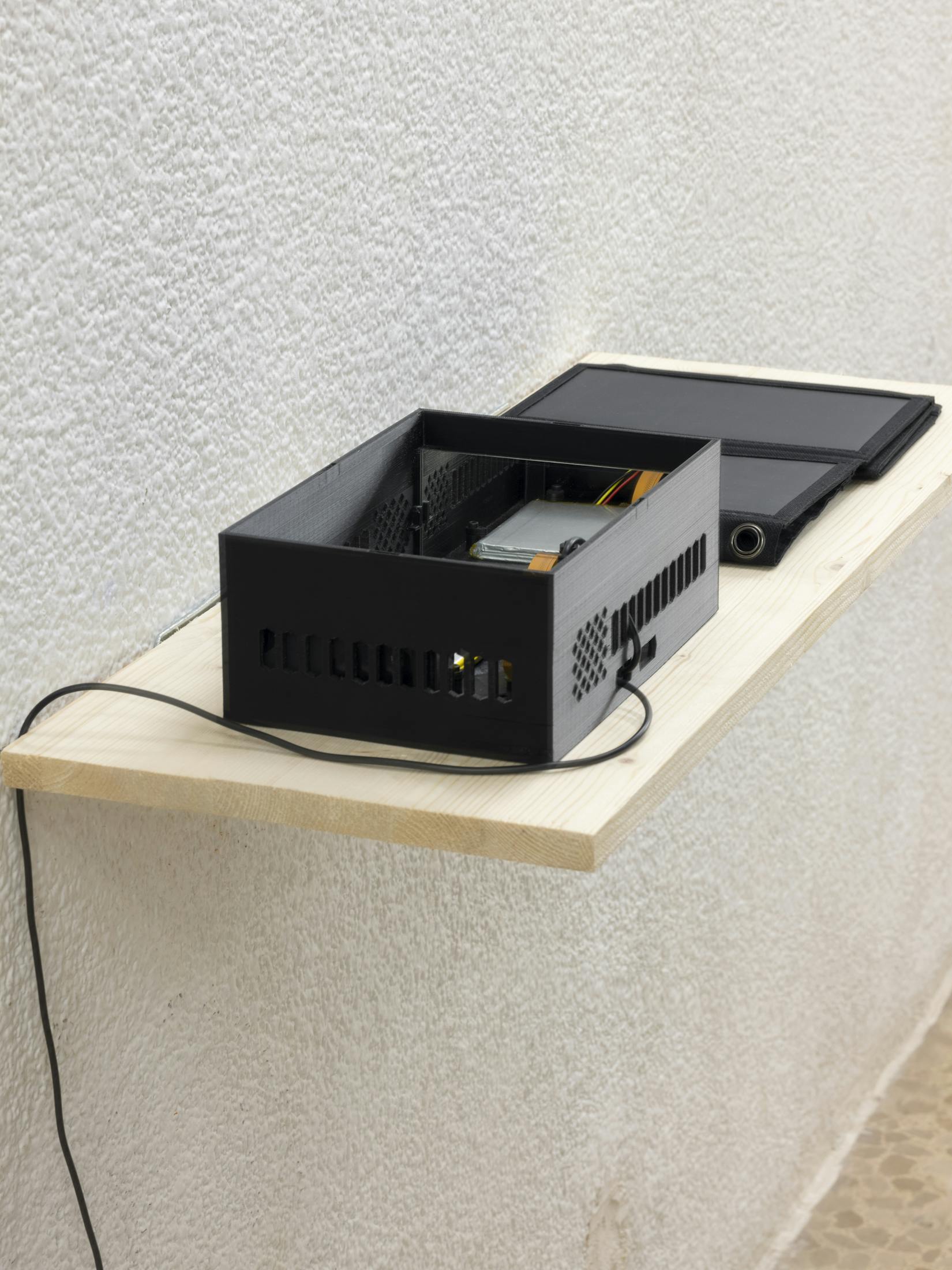As we approach a space that has yet to exist, we can still feel all of its power embodied in the materiality of the present, lurking in its cracks and margins. This space cannot be projected from any other coordinates than the external present and yet, at the same time, its features make it impossible to sketch with any precision. It is imbedded in accelerated narratives, fiber-optic tentacles that extend beneath our feet and materialize in both everyday objects and actions and in the urban matrixes and open-pit mines swathed in the promising tales of a cloud anchored to the mineral strata of silicon, copper, and other metals. Like A World That Crumbles When No One Is Watching speaks to us of the ethereal materiality of the present in order to make tangible the implications of our quotidian digital actions, which traverse all sorts of domestic, urban, and planetary infrastructures. The innocent scrolling of our fingers on the illuminated glass of our devices actually mobilizes forces with global effects and implications, capable of altering conceived notions of the domestic, the urban, the territorial, and the corporeal.
Peering into the polished black mirror of the extreme present, Like A World That Crumbles When No One Is Watching returns our gaze and transfers the responsibility for our actions—as trivial as they may be—back onto us. This gaze is constructed through sensors, electrical pulses, and machinic organs; this reality is read through information processing algorithms. As a daily occurrence, we are unaware of this gaze, but it helps us to blur own own limits that “descends through the barriers of time […] like a world that crumbles when no one is watching. Fusion with the ultimate machine is complete. The future is now past.”
